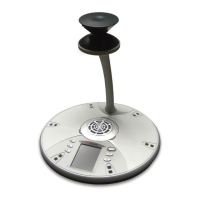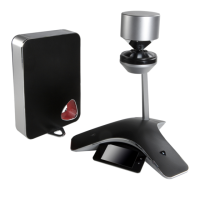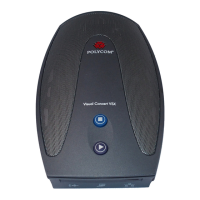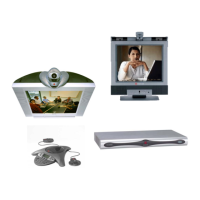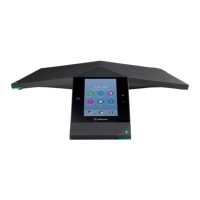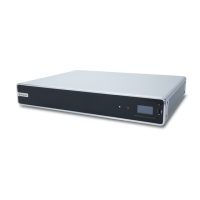Configuration Parameters
Polycom, Inc. 46
Use Caution When Changing Device Parameters
Use caution when changing <device/> parameters as incorrect settings may apply the same IP address
to multiple systems.
Note that some parameters may be ignored. For example, if DHCP is enabled it will still override the value
set with device.net.ipAddress.
Though individual parameters are checked to see whether they are in range, the interaction between
parameters is not checked. If a parameter is out of range, an error message displays in the log file and
parameter will not be used.
Incorrect configuration can put the systems into a reboot loop. For example, server A has a configuration
file that specifies that server B should be used, and server B has a configuration file that specifies that server
A should be used.
To detect errors, including IP address conflicts, Polycom recommends that you test the new configuration
files on two systems before initializing all systems.
Types of Device Parameters
The following table outlines the three types of <device/> parameters, their permitted values, and the default
value.
The following table lists each of the <device/> parameters that you can configure.
Device Parameter Types
Parameter Permitted Values Default
device.set
1
0 or 1 0
If set to 0, do not use any device.xxx fields to set any parameters. Set this to 0 after the initial software
installation.
If set to 1, use the device.xxx fields that have device.xxx.set=1. Set this to 1 only for the initial software
installation.
device.xxx
1
string
Configuration parameter.
device.xxx.set
1
0 or 1 0
If set to 0, do not use the device.xxx value. If set to 1, use the device.xxx value.
For example, if device.net.ipAddress.set=1, then use the value set for device.net.ipAddress.
1
Change causes system to restart or reboot
device.cma.serverName string
The server address that the system uses to connect to the provisioning server.

